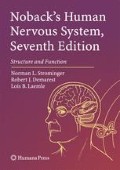Abstract
The effects of a brain stem lesion depend upon the anatomic and physiologic roles of the neurons and tracts damaged. Tracts passing through or commencing within the brain stem generally are oriented in a plane parallel to the longitudinal axis of the brain stem. Examples are the spinothalamic tract, medial lemniscus, and corticospinal tract. In contrast, motor cranial nerve nuclei are restricted to a single subdivision of the brain stem and their intramedullary roots course in a plane perpendicular to the longitudinal axis. Tract signs alone are of limited value in determining the level of injury. For example, in the case of a lesion involving the corticospinal tract, the spinal cord cannot be excluded. Likewise, cranial nerve signs by themselves may be insufficient to determine whether the lesion is in the brain stem or peripheral nerve. However, combining the signs of long tract involvement and cranial nerve impairment provides the framework to determine the precise site of a lesion. Thus, for this purpose, it is important to know the longitudinal and transverse organization of the brain stem.
Access this chapter
Tax calculation will be finalised at checkout
Purchases are for personal use only
Suggested Readings
Collins RC. 1997. Neurology. Philadelphia: Saunders.
Dublin AB, Dublin WB. 1982. Atlas of Neuroanatomy with Radiologic Correlation and Pathologic Illustration. St Louis, MO: WH Green.
Gilman S, Winans S. 2003. Manter and Gatz’s Essentials of Clinical Neuroanatomy and Neurophysiology. 10th ed. Philadelphia: FA Davis.
Patten J. 1977. Neurological Diferential Diagnosis. New York: Springer-Verlag.
Ropper AH, Samuels MA. 2009. Adams and Victor’s Principles of Neurology. 9th ed.New York, NY: McGraw-Hill Medical.
Rowland LP. Clinical Syndromes of the Spinal Cord and Brainstem. In: Kandel ER, Schwartz JH, Jessell T, eds. 1991. Principles of Neural Science. 3 rd ed. New York: Elsevier; p.711–730.
Rowland LP, Pedley TA eds. 2009. Merritt’s Neurology. Philadelphia, PA: Walters Kluwer/Lippincott the human nervous system.
Author information
Authors and Affiliations
Rights and permissions
Copyright information
© 2012 Springer Science+Business Media New York
About this chapter
Cite this chapter
Strominger, N.L., Demarest, R.J., Laemle, L.B. (2012). Lesions of the Brainstem. In: Noback's Human Nervous System, Seventh Edition. Humana Press, Totowa, NJ. https://doi.org/10.1007/978-1-61779-779-8_17
Download citation
DOI: https://doi.org/10.1007/978-1-61779-779-8_17
Published:
Publisher Name: Humana Press, Totowa, NJ
Print ISBN: 978-1-61779-778-1
Online ISBN: 978-1-61779-779-8
eBook Packages: Biomedical and Life SciencesBiomedical and Life Sciences (R0)

